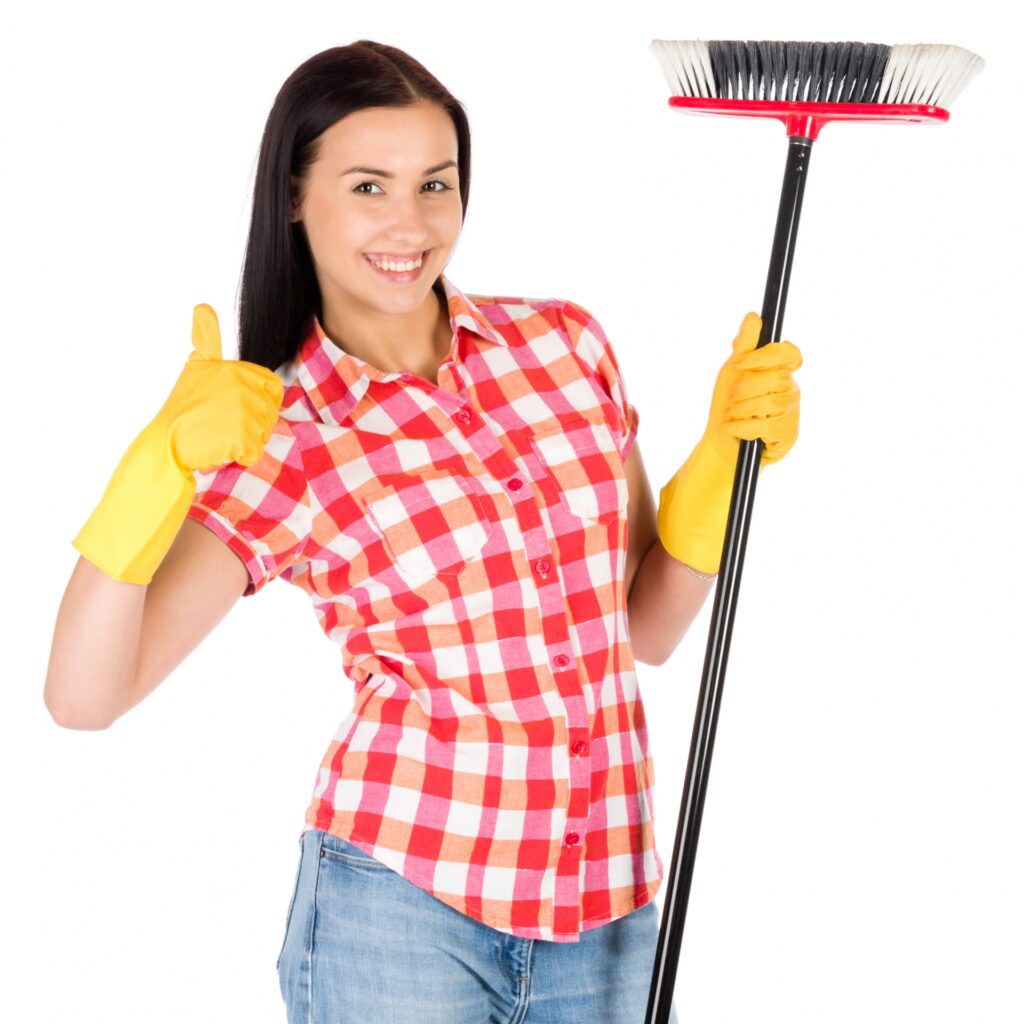When addressing the cleaning needs of properties that have welcomed pets, a deeper understanding and a tailored approach are essential. Following our previous exploration of the importance of inquiring about pets, we now focus on the sophisticated methods and considerations vital for delivering an exhaustive, pet-attuned cleaning service.
Customised Cleaning Methods for Homes with Pets
Cleaning homes that have been residences to pets demands a specialised approach, focusing not just on the visible aspects like hair and odours but also on creating an environment that’s as allergen-free as possible. Here’s a deeper look into the customised cleaning methods that cater specifically to the challenges presented by pets.
Specialised Vacuuming Techniques
One of the first lines of defence against pet hair and dander is the use of specialised vacuuming techniques. Vacuums equipped with HEPA filters are particularly effective, as they can trap a high percentage of pet dander, pollen, and dust mites, significantly reducing allergens in the home. Attachments designed for upholstery and tight spaces are essential for removing pet hair that clings to fabrics and lurks in corners.
Targeted Cleaning Agents
The choice of cleaning products is critical in homes with pets. Products that are both effective against pet odours and safe for animals and humans are the goal. Enzyme-based cleaners play a crucial role here, as they can break down the proteins in pet urine, saliva, and other organic matter, eliminating odours at their source rather than merely masking them. It’s important to select products that do not leave toxic residues, considering the tendency of pets (and children) to come into close contact with cleaned surfaces.
Deep Cleaning for Fabrics and Carpets
Fabrics and carpets can harbour pet odours and stains more so than hard surfaces. Deep cleaning these materials requires techniques that go beyond surface cleaning. Steam cleaning, for example, can penetrate deep into the fibres of carpets and upholstery, removing not just the dirt and hair but also the allergens and microbes that can cause odours. When steam cleaning, it’s vital to ensure that the process doesn’t leave fabrics overly wet, as this can encourage the growth of mould and mildew, further complicating indoor air quality.
Attention to Detail in Hard-to-Reach Areas
Pets often find their way into the most unexpected places, leaving hair, dander, and odours in hard-to-reach areas. Cleaning these spots requires a meticulous approach, using attachments and tools designed for precision cleaning. This includes areas behind appliances, under furniture, and along baseboards. Regular cleaning of these areas helps in maintaining an overall cleaner environment, reducing the accumulation of pet-related allergens.
Regular Maintenance and Prevention
Beyond the deep cleaning processes, maintaining a home with pets involves regular upkeep to prevent the accumulation of hair, dander, and odours. This includes frequent vacuuming, the use of air purifiers with HEPA filters to continuously remove airborne allergens and the placement of washable throw rugs in areas where pets spend the most time. Encouraging grooming and bathing for pets also reduces the amount of hair and dander they shed.
Addressing Hidden Challenges: Allergens and Microbes in Pet-Friendly Homes
In homes where pets are cherished members of the family, addressing the hidden challenges of allergens and microbes is paramount for maintaining a healthy living environment. Pets, while bringing joy and companionship, also introduce various microscopic challenges that require a nuanced approach to cleaning.
Understanding the Scope of Allergens and Microbes
Pets contribute to the indoor allergen load through their dander, saliva, and urine, which can exacerbate allergies and asthma in sensitive individuals. Microbes, including bacteria and fungi, can also thrive in environments where pets live, especially in areas where pets eat, sleep, or spend a significant amount of time. These challenges are often invisible to the naked eye but can significantly impact indoor air quality and overall health.
Advanced Filtration Techniques
The use of vacuums with HEPA filters is critical in trapping pet dander, dust mites, and other airborne allergens. These filters are designed to capture particles as small as 0.3 microns, effectively reducing the allergen load in the air. For homes with pets, it’s advisable to vacuum at least twice a week, paying special attention to areas where pets frequent.
Enzymatic Cleaners and Microbial Solutions
Enzymatic cleaners are particularly effective against organic matter left by pets, such as urine and saliva. These cleaners work by breaking down the organic compounds into simpler, non-odorous substances, addressing both stains and smells. For microbial concerns, including bacteria and mould, cleaners with antimicrobial properties can offer an additional layer of protection, sanitising surfaces without the harshness of traditional disinfectants.
Deep Cleaning Soft Surfaces
Soft surfaces, such as carpets, rugs, and upholstery, can harbour allergens and microbes more readily than hard surfaces. Steam cleaning is a potent method for deep cleaning these areas, using high temperatures to kill bacteria and dust mites and remove deeply embedded pet hair and dander. It’s important to ensure that these surfaces dry completely after steam cleaning to prevent mould growth.
Focus on Pet Areas
Areas of the home designated for pets, such as bedding, feeding stations, and play areas, require special attention. Washing pet bedding regularly in hot water can kill dust mites and remove accumulated hair and dander. Non-porous feeding stations and toys can be cleaned with mild, pet-safe disinfectants to reduce the spread of bacteria.
Air Quality Management
Improving indoor air quality is a multifaceted approach that includes regular cleaning and air filtration. Air purifiers equipped with HEPA filters can continuously remove airborne allergens from indoor spaces. It’s also beneficial to maintain good ventilation, especially in areas where pets spend a lot of time, to dilute and remove airborne contaminants.
In conclusion, addressing the hidden challenges of allergens and microbes in pet-friendly homes involves a combination of thorough cleaning practices, targeted use of cleaning products, and strategies to improve indoor air quality. By understanding and implementing these approaches, pet owners can create a healthier environment for all occupants, ensuring that the joy pets bring into our lives is not overshadowed by concerns over allergens and microbes.
Educating Landlords and Tenants on Pet-Friendly Property Maintenance
In the context of pet-friendly tenancy, the education of both landlords and tenants about maintaining properties in a way that accommodates pets while ensuring the cleanliness and longevity of the premises is crucial. This education not only helps in preventing damage and maintaining property value but also ensures a healthy living environment for all occupants.
Importance of Clear Communication
Clear communication between landlords and tenants about expectations and responsibilities for pet ownership within the property is foundational. Landlords should provide tenants with guidelines that outline how to care for the property when pets are present, including specifics on regular cleaning routines, damage prevention measures, and any restrictions on pet types or sizes.
Creating a Pet Policy
A comprehensive pet policy can serve as an educational tool, outlining the dos and don’ts for tenants with pets. This policy could include requirements for pet registration, vaccination, and spaying/neutering, alongside stipulations for pet-related damage repairs and the necessity for regular professional cleaning services to address pet hair, dander, and odours.
Regular Property Inspections
Educating tenants on the importance of regular property inspections can help in the early identification of potential issues related to pet ownership, such as unaddressed stains, damage to fixtures, or signs of pests. These inspections can also be educational for tenants, highlighting areas of concern they might have overlooked and providing an opportunity to discuss maintenance and cleaning strategies.
Providing Resources for Pet Owners
Landlords can play a proactive role by providing tenants with resources on how to maintain a clean and safe environment for pets. This could include recommendations for pet-friendly cleaning products, tips for pet grooming and care to reduce shedding and dander, and information on local pet services, such as grooming and training facilities.
Encouraging Professional Cleaning Services
Educating tenants about the benefits of professional cleaning services, especially those specializing in pet-friendly cleaning, can be beneficial. Highlighting the importance of deep cleaning services for carpets, upholstery, and air ducts to remove pet hair, dander, and odours can encourage tenants to invest in these services regularly, maintaining the property’s condition and ensuring a healthier living space.
Training and Behavioural Resources
Providing tenants with access to training and behavioural resources for pets can significantly reduce potential property damage and complaints. Educating tenants on basic pet training techniques, the importance of regular exercise, and how to address common behavioural issues can lead to a more harmonious living environment for pets, tenants, and neighbours.
The Significance of Professional Cleaners in Pet-Friendly Tenancies
Professional cleaners hold a pivotal role in maintaining the cleanliness and longevity of pet-friendly rental properties. Their expertise and access to specialised tools and cleaning agents make them indispensable for landlords and tenants aiming to uphold high standards of hygiene and property care. The general misconception of “Anybody can do the cleaning. It is a job for dummies.” can carry risks and can jeopardise your tenancy deposit. Here’s an in-depth look at why professional cleaners are so crucial in this context.
Expertise in Pet-Specific Cleaning Challenges
Professional cleaners bring a wealth of experience in tackling the unique challenges presented by homes with pets. They understand the nuances of removing pet hair, dander, and odours that go beyond the capabilities of regular cleaning routines. Their knowledge of the specific needs of pet-friendly homes allows them to target areas that might be overlooked by the untrained eye, ensuring a comprehensive clean that benefits both the property and its occupants.
Access to Specialised Equipment and Products
One of the key advantages of professional cleaners is their access to advanced cleaning equipment and pet-safe cleaning products. These tools and solutions are often not available to the general public or would be impractical for individual tenants to purchase. Professional-grade vacuums with HEPA filters, steam cleaners, and enzymatic cleaning agents can effectively address pet odours, stains, and allergens, ensuring a deeper and more hygienic clean.
Customised Cleaning Plans
Professional cleaning services can offer customised cleaning plans tailored to the specific needs of a pet-friendly property. This bespoke approach allows for flexibility in addressing the areas of most concern, whether it’s deep cleaning carpets and upholstery to remove pet hair and allergens or focusing on air quality improvement. By working with the property owners and tenants, professional cleaners can develop a cleaning schedule that minimises disruption while maximising cleaning outcomes.
Preventative Care for Longevity of the Property
Beyond immediate cleaning needs, professional cleaners can contribute to the preventative care of the property. Regular, professional cleaning can prevent the accumulation of pet hair and dander that, over time, can lead to wear and tear on carpets and furniture. This preventative approach helps maintain the property’s value and avoids costly repairs or replacements down the line.
Health Benefits for Occupants
The health benefits of employing professional cleaners in pet-friendly homes cannot be overstated. By thoroughly removing allergens and microbes, professional cleaning services can significantly improve indoor air quality, making the living environment safer and more comfortable for all occupants, especially those with allergies or respiratory issues.
Peace of Mind for Landlords and Tenants
Finally, the use of professional cleaners provides peace of mind for both landlords and tenants. Landlords can rest assured that their property is being maintained to a high standard, protecting their investment. Tenants benefit from living in a clean, healthy environment without the stress of achieving professional-level cleanliness on their own.




